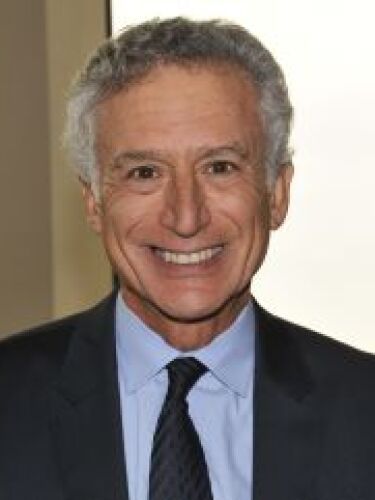With a potential combined market value of $30 billion, BioSpace takes a deep dive into the Phase III data supporting Eisai and Biogen’s Leqembi and Eli Lilly’s investigational donanemab.
Pictured: Memory lapses in neurodegenerative disease concept/iStock, Naeblys
With the demise of Roche’s gantenerumab in November 2022, the Alzheimer’s disease space became a two-horse race between Eisai and Biogen’s Leqembi (lecanemab) and Eli Lilly’s donanemab. One, Leqembi, received full FDA approval in July; the other, donanemab, is widely expected to secure the agency’s approval before the end of 2023.
While discussion about the two anti-amyloid antibodies is possible from a treatment perspective, experts who spoke with BioSpace agreed that direct comparisons on efficacy and safety without a head-to-head trial cannot be made. Leqembi and donanemab also target slightly different patient populations and have distinct mechanisms of action, making treatment decisions even more complex.
Salim Syed, managing director and senior biotechnology analyst, equity research at Mizuho Americas, which covers Biogen, told BioSpace that—at this point—it’s not clear whether there will be a market leader. “We’ve done a number of discussions with physicians in the KOL community and there are physicians that are on both sides of this debate,” he said. “Both of these drugs [are] the best that we’ve seen versus prior compounds.”
BioSpace took a closer look at key data from the Phase III trials of Leqembi and donanemab, and sought expert perspectives on their safety profiles, dosing schedules and potential treatment strategies.
Phase III Trials
| Indication | Early Alzheimer’s disease (mild cognitive impairment or mild dementia due to Alzheimer’s disease) with evidence of amyloid on positron-emission tomography (PET) or by cerebrospinal fluid testing | Early symptomatic Alzheimer’s disease and amyloid and tau pathology | |
| Duration | 18 months | 76 weeks (~17 months) | |
| Participants | 1,795 | 1,736 | |
| Dosing schedule | Every two weeks | Once a month | |
| Efficacy | Reduced clinical decline compared to placebo by 27% at 18 months based on the Clinical Dementia Rating-Sum of Boxes (CDR-SB) assessment | All amyloid-positive early symptomatic participants: Reduced decline on the Integrated Alzheimer’s Disease Rating Scale (iADRS) by 22% and on the Clinical Dementia Rating-Sum of Boxes (CDR-SB) by 29% compared to placebo Participants with low to medium levels of tau: Reduced decline on the iADRS by 35% on the CDR-SB by 36% compared to placebo Mild cognitive impairment (low-medium tau): 60% (iADRS) and 46% (CDR-SB) | |
| Incidence of amyloid-related imaging abnormalities (ARIA) | ARIA-E (asymptomatic): 12.5% (versus 1.7% of placebo) ARIA-E (symptomatic): 2.8% (versus 0.0% of placebo) ARIA-H (asymptomatic): 17.0% (versus 8.7% of placebo) ARIA-H (symptomatic): 0.7% (versus 0.2% of placebo) Total: 21.3% (versus 9.3% of placebo) | ARIA-E (asymptomatic): 17.9 % (versus 1.9% of placebo) ARIA-E (symptomatic): 6.1% (versus 0.1% of placebo) ARIA-H (all): 31.4% (versus 13.6% of placebo) Total: 36.8 % (versus 14.9% of placebo) | |
| Incidence of serious adverse events | Any adverse event: 14.0% (versus 11.3% of placebo) Deaths Related to Treatment: Double-blind trial: 0 Open-label phase: cited as a contributing cause to 3 | Any adverse event: 17.4% (versus 15.8% of placebo) Deaths Related to Treatment: 3 (versus 1 in the placebo group) |
Safety Profiles
Amyloid-related imaging abnormalities (ARIA) are a well-documented risk associated with anti-amyloid antibodies intended to treat Alzheimer’s disease. ARIA—or brain swelling—is usually transient and mild, but it can be serious and even fatal, “so it needs to be managed carefully, with careful MRI monitoring,” said Stephen Salloway, professor of psychiatry and human behavior and professor of neurology at Brown University’s Warren Alpert Medical School, who was a co-author on the TRAILBLAZER-ALZ 2 JAMA publication and an investigator on Leqembi’s Phase II trial. “When you remove amyloid from the brain . . . there’s a risk of having fluid shifts in the brain,” Salloway told BioSpace.
Syed said that some physicians prefer Leqembi’s profile over that of donanemab, partly because “it’s safer than donanemab, from what we can tell, in terms of percentage of ARIA.”
In The New England Journal of Medicine, the authors wrote that “no deaths [in CLARITY-AD] were considered by the investigators to be related to lecanemab or occurred with ARIA.”
However, in the open-label phase, there were three deaths where investigators cited Leqembi as a contributing cause, Michael Irizarry, senior vice president of clinical research and deputy chief clinical officer for Alzheimer’s disease and brain health at Eisai, told BioSpace, adding that the patients had either concurrent ARIA-E or intracerebral hemorrhage. Leqembi’s label states that because intracerebral hemorrhage has been seen with the drug, caution should be used in co-administering antithrombotics or a thrombolytic agents.
Salloway additionally pointed to a higher rate of macrohemorrhage—or larger bleeds—that occurred in patients on anticoagulation therapies taking Leqembi. This was compared to zero large bleeds with donanemab treatment, he said, despite approximately 10% of patients in TRAILBLAZER-ALZ 2 also being on anticoagulation drugs. Salloway said he was surprised by the result, as he had expected a similar rate of macrohemorrhage between the two and called Lilly’s data “encouraging.”
Different Drugs; Different Dosing Schedules
Currently, both Leqembi and donanemab require intravenous (IV) infusion, and hospitals and other treatment sites are racing to build up capacity. Given this requirement, an oft-noted difference is that Leqembi is dosed once every two weeks, while donanemab—at least in the Phase III TRAILBLAZER-ALZ 2 trial—was given once every four weeks.
“For some of these physicians, who have smaller infusion center capacity that they’re working with, perhaps once a month is better,” Syed said.
Howard Fillit, co-founder and chief science officer at the Alzheimer’s Drug Discovery Foundation, told BioSpace this could also be a big deal for patients but added that he believes this discrepancy will be managed by the industry-wide movement toward subcutaneous injection—a field he said was pioneered by gantenerumab, which he called “kind of a proof of concept.”
“The infusion centers are expensive and there’s a heavy burden there,” Fillit said. “It’s doable, but I think the movement to home-administered subcutaneous injections of these antibodies is the future.”
Another notable difference is that treatment in TRAILBLAZER-ALZ 2 was stopped when amyloid plaque was cleared. In this trial, the treatment effect of donanemab continued to increase relative to placebo over 18 months, even though many participants completed their course of therapy at six or 12 months, an Eli Lilly representative told BioSpace. “This does support the benefits and reduced treatment burden of limited duration dosing,” the representative said.
Fillit said Lilly’s data on stopping rules may give donanemab an advantage but added that he isn’t sure how clinically meaningful this difference would be. He said he hopes that as Leqembi and other drugs in this class enter the market stopping rules will become part of the standard of care, noting that this could reduce the cost of these medications to payers including Medicare.
In Leqembi’s case, Irizarry said there is an advantage to continued treatment. In addition to amyloid plaques, Leqembi preferentially targets amyloid beta protein protofibrils—a soluble aggregated amyloid species. “So even when amyloid plaques are cleared, there’s still activity binding to this soluble aggregated species.”
Data from Leqembi’s Phase II study, where treatment was stopped and then reinitiated, suggests that when treatment is stopped, amyloid and tau gradually reaccumulate, and that continued treatment can continue to bring these levels down, Irizarry said.
Salloway agreed with this assessment but said that the reaccumulation occurs at a very slow rate. “We don’t know how long or which patients need to stay on longer term treatment, and whether or not the dosing interval could either be stopped or spread out.” He suggested that treatment could be individualized and said that having an evidence-based way to guide these decisions—such as a blood test measuring p-tau or a PET scan to measure amyloid—would be helpful.
A $30B Market
With the time required to establish infusion sites, Medicare coverage details still emerging—and the fact that donanemab has yet to be approved—the combined market value for the two prospective leaders is not yet clear.
“Everybody knows, foreseeably, that these drugs are going to get used,” Syed said. “The question is, what is the ramp?”
With the FDA’s traditional approval of Leqembi in July, the Centers for Medicare and Medicaid Services broadened its coverage, allowing the drug to be prescribed outside of a clinical trial. Now, it is available on the market to patients diagnosed with mild cognitive impairment or mild Alzheimer’s disease dementia, with evidence of beta-amyloid deposits in the brain. This coverage criteria is expected to extend to donanemab, if it is approved.
Whoever emerges as the market leader—if either does—Syed said he projects the market to be around $30 billion between Leqembi and donanemab, with Mizuho guiding toward net sales of $12 billion at Leqembi’s peak. GlobalData concurs, with the data and analytics company forecasting $12.9 billion in sales between 2023 and 2028.
For Leqembi, a company spokesperson told BioSpace that Eisai expects about 10,000 patients to be on the drug in the U.S. by March 31, 2024—the end of its fiscal year—and projects revenue of up to $7 billion in annual global sales by 2030.
Heather McKenzie is a senior editor at BioSpace. You can reach her at heather.mckenzie@biospace.com. Follow her on LinkedIn and Twitter @chicat08.









